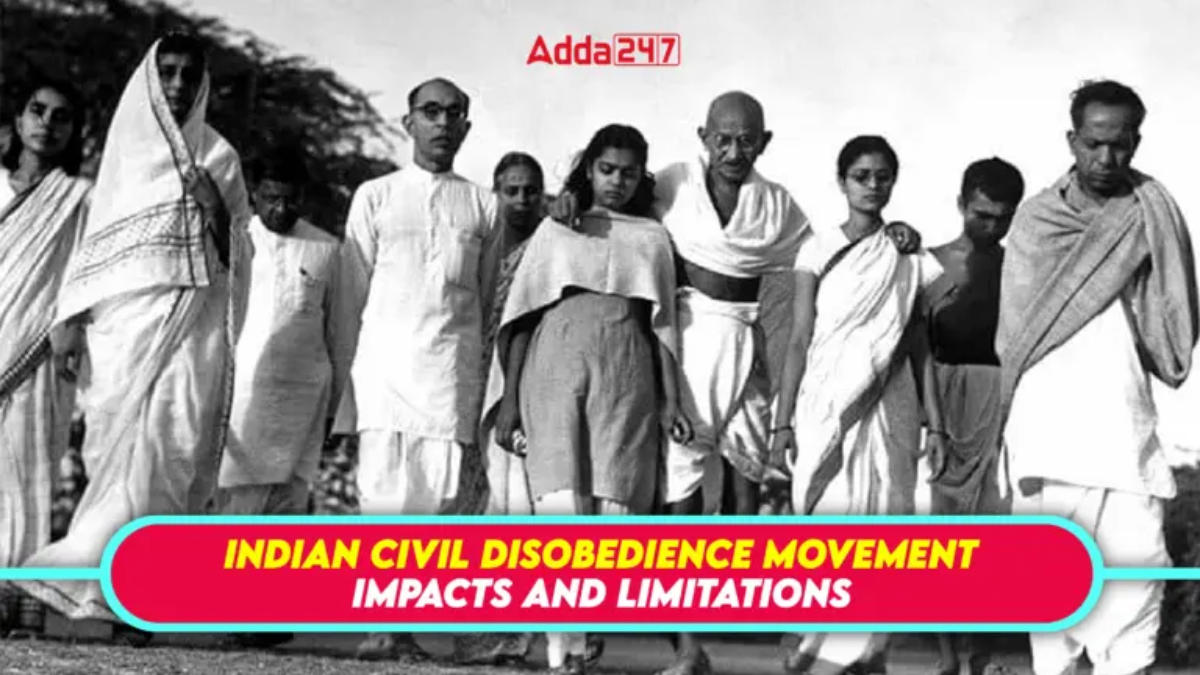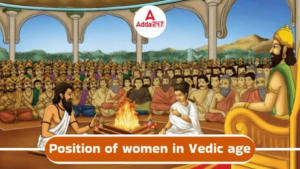Table of Contents
A significant milestone in India’s struggle for independence, the Civil Disobedience Movement exemplifies the power of nonviolent resistance. This historic campaign, led by Mahatma Gandhi, inspired millions of Indians to unite, demonstrate resilience, and engage in collective action. The primary objective was to deliberately defy laws deemed unjust to challenge British rule. The movement commenced with Gandhi’s famous Dandi March. On March 12, 1930, Gandhi, accompanied by 78 members of the Sabarmati Ashram, embarked on a journey from Ahmedabad to Dandi, a village approximately 385 kilometers away on India’s western coast. They arrived at Dandi on April 6, 1930.
The Civil Disobedience Movement: What Was It?
During India’s Civil Disobedience Movement, people chose, consciously and without retaliation, to deliberately disobey official regulations. They took this action to express their displeasure with the regulations. The historic Dandi March, popularly known as the Salt Satyagraha, which took place in March 1930 marked the start of the Indian Civil Disobedience Movement. Gandhi used this campaign to take direct action in opposition to the British salt tax, which he saw as oppressive and exploitative.
The Civil Disobedience Movement’s Causes
Examining the reasons behind the Civil Disobedience Movement helps us understand the unrest that is growing among Indians. The following are some of the major causes of this movement:
- Salt Tax: The Indian populace, especially the impoverished, suffered greatly as a result of the British salt tax. One glaring illustration of the British government’s exploitative economic practices was its monopoly on the manufacturing and distribution of salt.
- Simon Commission: Indians strongly disapproved of the commission’s all-British makeup and boycotted it when it was dispatched to the country in 1928 with recommendations for constitutional changes.
- Call for Purna Swaraj: The Civil Disobedience Movement was greatly influenced by the Indian National Congress’s announcement on January 26, 1930, of Purna Swaraj, or complete self-rule.
- Repression by the British Government: The Indian public’s rage and discontent were exacerbated by the British government’s severe and repressive policies, such as the Rowlatt Act.
The Civil Disobedience Movement’s characteristics
The level of participation that the Civil Disobedience Movement saw was one of its defining characteristics. Everyone in society was effectively mobilized by the revolution, including rural farmers and urban intelligentsia. The following are a few essential components of the Civil Disobedience Movement:
- Mass involvement: In the strictest sense of the word, the movement was a mass movement since it attracted involvement from a large segment of the population.
- Non-Violent Nature: In keeping with Gandhi’s Satyagraha philosophy, the movement promoted nonviolent means of protesting British rule at all times.
- Widespread Boycotts: During the campaign, there were many boycotts of British institutions, products, and services. A large-scale campaign was launched to promote Swadeshi, or indigenous, products.
- Women’s Involvement: The Civil Disobedience Movement was noteworthy for the active involvement of women, a characteristic absent from earlier movements.
- Impact on the World: The movement had a significant effect on the world. The nonviolent mode of protest struck a chord with viewers around the world, drawing attention to India’s struggle for freedom.
Civil Disobedience Movement’s Impacts
This Civil Disobedience Movement impacted millions of people and some of them are written below, you must read them to understand its impact.
- Millions of Indians were mobilized by the Civil Disobedience Movement, especially those from underprivileged groups. In the fight for independence, it offered people a voice and a sense of agency.
- With its focus on inclusivity and equality, the movement questioned the inflexible caste structure. It encouraged harmony and social advancement among various social groups.
- Women’s involvement in the movement was unparalleled. This dismantled preconceived notions about gender roles and gave them more clout in their independence struggle.
- The movement undermined the moral authority of the colonial government by widely disobeying British laws and regulations.
- The success of the initiative strengthened the spirit of resistance and nationalism. Indians united against British authority as a result.
- India’s quest for independence gained international attention as a result of Gandhi’s nonviolent tactics and the movement’s success.
- The boycotts of British institutions and products by the campaign had a big effect on the colonial economy.
- The home economy was strengthened by the emphasis on independence and the utilization of Indian products. A spirit of economic nationalism was encouraged by it.
- Due to the movement’s success, calls for more equitable resource allocation and economic changes grew.
British Reaction to the Civil Disobedience Movement
The Civil Disobedience Movement was initially met with a combination of conciliation and repression from the British government.
- The movement was becoming more and more popular, and the British were concerned that this might threaten their colonial power. They acknowledged Gandhi’s capacity to inspire mass mobilization and the efficacy of his nonviolent strategy.
- Over time, the response from the British government changed. It went from strict suppression to a more accommodative stance. In the end, they opened talks with Gandhi, released the movement leaders who had been imprisoned, and loosened certain restrictions.
- The British were forced to acknowledge the growing demand for Indian self-governance as a result of the movement’s success. In India’s fight for freedom, it signaled a sea change. It cleared the path for more give-ins and, in the end, the independence of the nation in 1947.
The Dandi March
An iconic moment in India’s struggle for independence is the Dandi March. This peaceful protest, led by Mahatma Gandhi, was a direct challenge to the British salt laws. On March 12, 1930, Gandhi set out from the Sabarmati Ashram in Ahmedabad, Gujarat. Over 24 days, he marched 240 miles on foot, attracting a growing number of supporters along the way. The march culminated on April 6, 1930, in the coastal village of Dandi, where Gandhi symbolically defied the salt regulations by collecting a pinch of sea salt.
Salt Satyagraha
- A key component of the Civil Disobedience Movement was the Salt Satyagraha or Salt March.
- Indians were not allowed to make, own, or trade salt without paying taxes according to the British salt regulations.
- Gandhi demonstrated his opposition to these repressive regulations by refusing to give up on the Dandi March by picking up a lump of natural salt at its conclusion.
- The Salt Satyagraha represented the larger fight for self-rule in addition to being a protest against the salt tax.
- The purpose of violating the salt regulations was to expose the injustices of the British administration and to inspire the Indian populace to rebel against colonial control.
The Civil Disobedience Movement and the Role of Salt
- The Civil Disobedience Movement relied heavily on salt. Every Indian, no matter how wealthy or how poor, has to deal with it in their lifetime. Gandhi managed to highlight the extent and depth of British exploitation by concentrating on the salt tax.
- Furthermore, the Indian independence movement came to be associated with salt. An extremely powerful emotional connection was made with the public by the straightforward and non-violent process of producing salt. That proved they could stand up to the power of the British Empire by working together and exhibiting passive resistance.
- Salt’s contribution to the Civil Disobedience Movement extends beyond its financial value. It represented the core of the fight, which was the Indian people’s commitment to obtain freedom from colonial domination and their claim to their riches. A potent symbol of the spirit of the Civil Disobedience Movement is the picture of Gandhi taking up a pinch of salt.
The Civil Disobedience Movement’s Limitations
- The Civil Disobedience Movement has several drawbacks despite its incredible successes.
- The movement’s influence was mostly felt in cities and certain other places. The participation rate from rural areas was lower.
- It was difficult for the movement to keep up the pace over time, especially in the face of internal differences and repression.
- British authority was undermined by the movement. It did not, however, immediately result in significant adjustments to colonial policy.
- The Civil Disobedience Movement’s nonviolent strategy faced opposition from radical movements that were promoting more forceful forms of resistance.



 Bishnoi Movement - History, Objective, a...
Bishnoi Movement - History, Objective, a...
 Neolithic Age- Agriculture, Tools, Potte...
Neolithic Age- Agriculture, Tools, Potte...
 Position of Women in Vedic Age: Societie...
Position of Women in Vedic Age: Societie...
